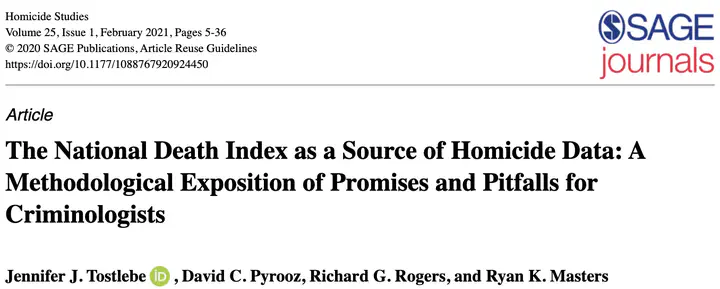The National Death Index as a source of homicide data: A methodological exposition of promises and pitfalls for criminologists

Abstract
Criminologists largely rely on national deidentified data sources to study homicide in the United States. The National Death Index (NDI), a comprehensive and well-established database compiled by the National Center for Health Statistics, is an untapped source of homicide data that offers identifiable linkages to other data sources while retaining national coverage. This study’s five aims follow. First, we review the data sources in articles published in Homicide Studies over the past decade. Second, we describe the NDI, including its origins, procedures, and uses. Third, we outline the procedures for linking a police gang intelligence database to the NDI. Fourth, we introduce the St. Louis Gang Member-Linked Mortality Files database, which is composed of 3,120 police-identified male gang members in the St. Louis area linked to NDI records. Finally, we report on preliminary cause-of-death findings. We conclude by outlining the benefits and drawbacks of the NDI as a source of homicide data for criminologists.